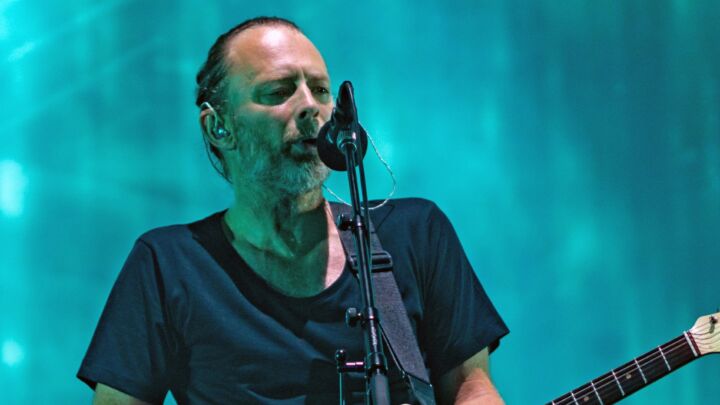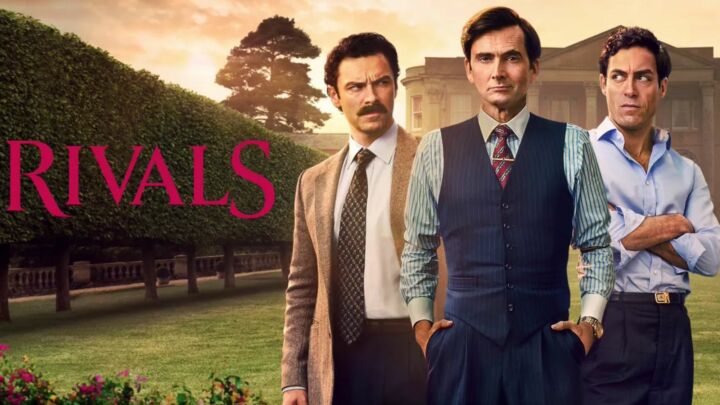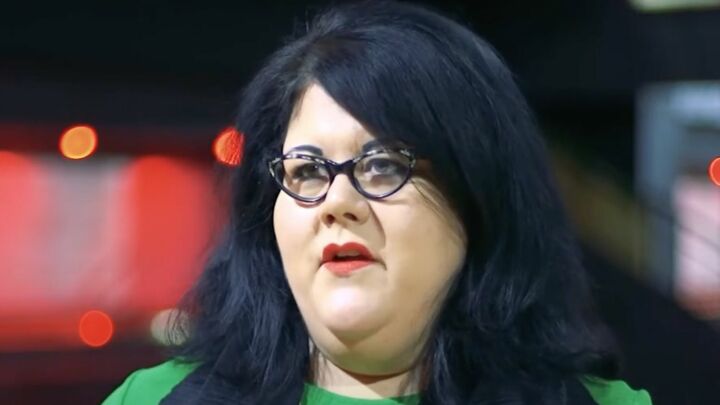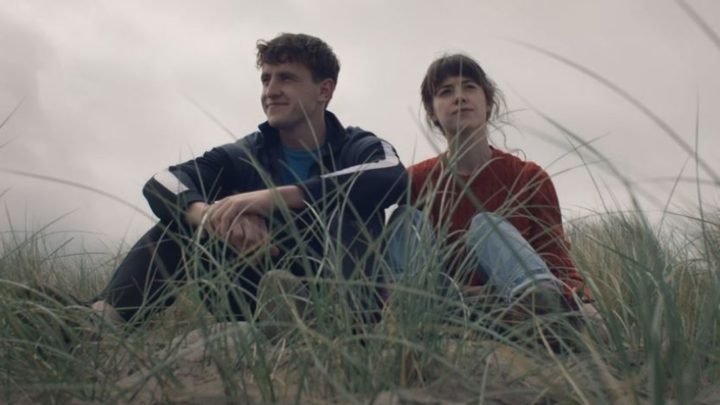British museums: the Druids are at the gates
The demand that an ancient skeleton should be taken out of Avebury museum and buried shows the dangers of officialdom’s ‘cultural sensitivity’.

Want to read spiked ad-free? Become a spiked supporter.
The future of a 4,000-year-old skeleton found near a stone circle 80 years ago is under threat. Known as ‘Charlie’, the skeleton was discovered near the Neolithic site of Windmill Hill in Avebury, a village in the south-west English county of Wiltshire, in 1929. It has been on display at the local museum for over 50 years.
Paul Davies of the Council of British Druid Orders (CoBDO) has demanded the burial of ‘Charlie’. Davies is also calling for seven other sets of human remains, aged between 4,000 and 5,700 years, to be taken from the museum, where they are used for research. He is demanding that they be buried in the ground in the name of respecting his ancestors.
The ancient skeletons are not simply gathering dust in the museum; they are of scientific and educational interest. They are associated with a prehistoric monument complex of international significance, and hold potential for integrating skeletal and funerary data which will aid our understanding of prehistoric funerary practices in the region. Their display at the museum performs an educational role by providing audiences with an understanding of the prehistory of the area.
Now, this research and display is threatened as an extensive, time-consuming and costly consultation on the Davies claim is carried out by English Heritage and the National Trust. The two organisations have agreed to a moratorium on new research involving destructive sampling on the remains while the claim is considered. When it is finally over (comments have only just closed) and responses analysed, a decision will be made about the future of the ancient skeletons.
Such a seemingly eccentric controversy, sparked by some Druids, ancient skeletons and cultural institutions, is more significant than it is funny. This fight over old bones is a revealing snapshot of the state of museums, and of the problems they will continue to face in fulfilling their role as places of research and education as a result of destructive trends that members of the museum sector itself have helped to set in motion.
You may want to laugh at the Druids (as this story in the UK Daily Mail does), but understanding how they came to claim these skeletons is important. Their demands were stimulated by a broader cultural climate and by trends in museums and cultural policy. What is remarkable is how this request from one bloke and a few mates has had such a dramatic impact, leading to a moratorium on research and the possible removal of an ancient skeleton from display.
Claims on human remains
Over the past three decades, ancient, historic and recent human remains have become subject to claims and controversies in different countries. The issue became prominent in Britain in the late 1990s, when many in the museum sector fought and won a battle to transfer human remains associated with colonisation to overseas indigenous groups.
In the early 2000s, museum professionals campaigning for the repatriation of overseas remains associated their cause with a number of different issues, including the Holocaust and the controversial work of plastinator and bodies exhibitor, Gunther von Hagens. However, the event that had the greatest impact on the debate was the controversy over the retention of children’s body parts at Alder Hey hospital in Liverpool and other hospitals. Exploited by the UK government, the high-profile Bristol Royal Infirmary Inquiry (2000) and The Royal Liverpool Children’s Inquiry (2001) investigated the circumstances leading to the removal, retention and disposal of human tissue, including children’s organs, and led to legislation on the issue of consent.
Campaigners, such as activist and archaeologist Cressida Fforde, author of Collecting the Dead, suggested the two issues – retaining the remains of those who were long-since dead and the organs of recently deceased children – were equivalent.
The idea that holding any kinds of human remains is problematic entered into policy and museum practice. Following the introduction of the Human Tissue Act in 2004, museums holding human remains less than 100 years old had to purchase a licence from the Human Tissue Authority. The very idea of a licence, which wasn’t needed before, suggests there is something wrong in holding this kind of material.
In 2008, senior professionals at Manchester University Museum covered three unwrapped Egyptian mummies with sheets, arguing that it was more respectful to hide them under white cloth. Without being requested to do so by present-day Egyptians or the local public, amongst whom the mummies are extremely popular (local people protested against the museum’s actions), professionals at the institution placed a sheet over the mummy of Asru, the partially-wrapped mummy of Khary, and a child mummy.
In line with this thinking, the director of the Museum of London has removed from display the skeleton of a boy who suffered from ricketts, and has set targets for the Christian burial of skeletons from archaeological excavations in London. The head of Worsley Man, a bog body, has been removed from display at Manchester University Museum. And four separate museum policies on human remains (Brighton & Hove, Leicester Museums and Galleries, National Museums and Galleries Wales, and University College London) state that human remains should be separated from objects in their stores and collections (they used to be stored together); that handling by the public should no longer take place; and that researchers should wear gloves when holding the human remains.
With the contestation over overseas human remains in museum collections high on the political and media agenda, and professionals questioning the holding and display of human remains, it is no surprise that Pagan groups campaigning around other issues jumped on the bandwagon in order to gain attention.
The world-famous stone circle at Stonehenge, also in Wiltshire, had become an increasing focus of attention for Pagans interested in engaging with the past and the environment. In the mid-1980s, there were contests over access to the site between ‘new age’ travellers and Pagans on one hand, and heritage organisations, the police and the government on the other. These continued into the 1990s and early 2000s, when groups opposed the plans supported by English Heritage and the National Trust for the development of the A303 trunk road around Stonehenge and the construction of a visitor centre.
It is out of the struggles at Stonehenge that three individuals negotiating for access to Stonehenge re-focused their demands to include concern for the treatment of human remains excavated on the site, at times demanding burial or the more vague ‘ritual’ or ‘respect’. They were Philip ‘Greywolf’ Shallcrass, joint-chief of the British Druid Order; the British Druid Order member, Paul Davies, who is fronting the new claim for the burial of ‘Charlie’ and the seven sets of remains; and Emma Restall Orr, who formed the more moderate organisation Honouring the Ancient Dead (HAD). They have used the prominent problem of human remains as a way of lending weight to their demands for Stonehenge.
Claims for legitimacy
CoBDO is an organisation which represents some Pagan groups. The request fronted by Paul Davies claims a genetic relationship with the human remains that are aged between 4,000 and 5,700 years old. But the demands are less about old bones than about winning affirmation of the legitimacy of Paganism from cultural organisations. These are, fundamentally, claims for recognition.
In HAD’s feedback on the UK Department of Culture, Media and Sport (DCMS) Guidance for the Care of Human Remains, for instance, the group criticises the guidance because it does not include Pagan concerns. The document argues that Pagan beliefs need to be recognised and included in the formation of policy:
‘The Pagan community’s sensitivities towards British human remains must now be heard if bodies are to avoid charges of religious discrimination. While indigenous peoples’ attitudes towards ancestry and heritage are now accepted (if seldom comprehended) by those dealing with human remains, British Pagan beliefs continue to be questioned or dismissed. This lack of acceptance is evident in the guidance, where there is no language sensitive to Pagan spiritual and religious concerns. Consultation is needed in order to address and amend this problem.’
Shifts in the remit of the museum and cultural policy have invited these demands from small Pagan groups. Over the past two decades, the remit of the museum has moved away from an empirical purpose in the service of knowledge, towards an inclusive, therapeutic model, that seeks to play a role in the recognition of community identities. Museums have become places that are meant to build community, raise self-esteem and affirm identity.
For example, the code of ethics of the Museum Association, the professional body for the sector, argues that museums should be places that consult and involve communities, users and supporters. It states that institutions should: ‘Consult and involve groups from communities they serve and their representatives to promote a sense of shared ownership in the work of the museum.’ The code also argues that institutions should, ‘recognise that individuals or communities may have a stronger claim to certain items than the museum’.
The moral privilege rhetorically bestowed on selected and included groups has encouraged others to demand equivalent treatment. Those who have felt left out have protested – not unreasonably so. The Druids are not the first to feel that other groups have got more attention than them. For example, after the Islam Awareness Week at Leicester Museums, the Secular Society complained that it, too, should be included in such initiatives; it is now more involved.
Cultural organisations cannot say no
I have spent considerable time researching the interaction between Pagan claims and the museum sector. I have spoken with many in the sector who think the demands for burial or respect are ridiculous – but I found that many of these critics feel unable to speak out.
As a consequence of the confusion about the role of the museum and the thinking that it is an instrument of recognition, the professionals who do not recognise Paganism as legitimate find it difficult to draw a line that excludes them and includes others. As a result they end up consulting with them. For some, this process may be tactical; a way of saying ‘no’ without actually saying ‘no’. But either way, the whole palaver of having a consultation in the first place legitimises the claims of various groups.
The lengthy and expensive consultation process in relation to the ‘Charlie’ skeleton at the Avebury museum has received the thumbs-up from museum professionals. The Museums Association commended the consultation, arguing that: ‘The thoroughness of how they are going about this is very impressive. We hope that other museums that find themselves in a similar situation will be able to follow this example.’ It added that ‘we hope that Avebury museum will use this opportunity to review the continued retention and display of the human remains in their care’.
But this request for Charlie and seven sets of ancient human remains is the work of one person and a few friends. It is far from clear that they represent the opinion of Druids as a whole; indeed, the group is already split. A breakaway faction led by Uther Pendragon now demands an end to all archaeological digs around henges and barrows. Emma Restall Orr from HAD has gently criticised the Davies demand, saying it is too extreme and the group is small. On the social networking site Facebook, there is a popular page called ‘Pagans for Archaeology’, which argues against burial and for research. It states:
‘We’re Pagans who love archaeology and believe that it has contributed hugely to our knowledge of our ancestors and the religions of the past… We are opposed to the reburial of ancient human remains, and want them to be preserved so that the memory of the ancestors can be perpetuated and rescued from oblivion, and the remains can be studied scientifically for the benefit of everyone.’
Paganism is alive with debate about the future of human remains and many have protested the claims for burial.
Yet despite the small number of people fronting the demands for the burial of the Avebury remains, and the strong opposition to it in Pagan circles, this claim from a few individuals is treated seriously by English Heritage and the National Trust. Claims on ancient skeletons have not come from nowhere. The Druids asking for them are responding to a process and climate which has encouraged these requests, and a cultural sector that is unable to draw a line and defend the traditional role of museums.
Until they can make a clear defence of the importance of education and research, museums will remain buried in endless consultations about old bones.
Dr Tiffany Jenkins is presenting a paper on the contestation over human remains in museum collections, at the Centre for Death and Society, University of Bath on 12 March 2009. For further information, visit the University of Bath website.
Previously on spiked
Tiffany Jenkins saw the decision to return an obelisk from Italy to Ethiopia as motivated by narrow cultural determinism. Maria Grasso looked at the furore over shrunken heads at Oxford’s Pitt Rivers Museum. Josie Appleton said museum directors should concentrate on looking after the galleries, and leave changing the world to the people. Yascha Mounk said those who oppose corporate sponsorship of the Louvre should be weary of state influence on museums, too. Or read more at spiked issue Museums and galleries.
Celebrate 25 years of spiked!
A media ecosystem dominated by a handful of billionaire owners, bad actors spreading disinformation online and the rich and powerful trying to stop us publishing stories. But we have you on our side. help to fund our journalism and those who choose All-access digital enjoy exclusive extras:
- Unlimited articles in our app and ad-free reading on all devices
- Exclusive newsletter and far fewer asks for support
- Full access to the Guardian Feast app
If you can, please support us on a monthly basis and make a big impact in support of open, independent journalism. Thank you.







Comments
Want to join the conversation?
Only spiked supporters and patrons, who donate regularly to us, can comment on our articles.